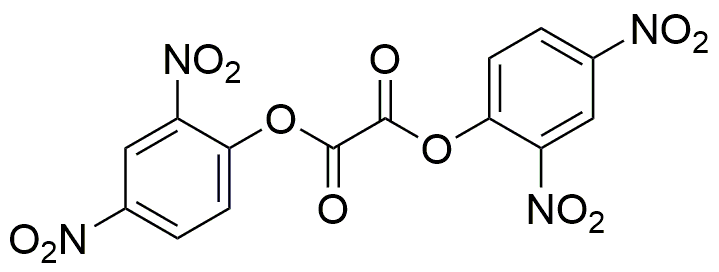Bis(2,4-dinitrophenyl) oxalate is widely utilized in research focused on:
- Explosives Research: This compound serves as a key precursor in the synthesis of various energetic materials, making it valuable for developing safer and more efficient explosives.
- Analytical Chemistry: It is used as a reagent in the detection and quantification of certain metal ions, aiding researchers in environmental monitoring and quality control in manufacturing.
- Pharmaceutical Development: The compound plays a role in drug formulation processes, particularly in the development of new therapeutic agents that require precise chemical properties.
- Polymer Chemistry: It is utilized in the synthesis of polymers with specific characteristics, enhancing the performance of materials used in coatings and adhesives.
- Educational Purposes: This chemical is often used in academic laboratories to demonstrate principles of organic synthesis and reaction mechanisms, providing students with hands-on experience.
General Information
Properties
Safety and Regulations
Applications
Bis(2,4-dinitrophenyl) oxalate is widely utilized in research focused on:
- Explosives Research: This compound serves as a key precursor in the synthesis of various energetic materials, making it valuable for developing safer and more efficient explosives.
- Analytical Chemistry: It is used as a reagent in the detection and quantification of certain metal ions, aiding researchers in environmental monitoring and quality control in manufacturing.
- Pharmaceutical Development: The compound plays a role in drug formulation processes, particularly in the development of new therapeutic agents that require precise chemical properties.
- Polymer Chemistry: It is utilized in the synthesis of polymers with specific characteristics, enhancing the performance of materials used in coatings and adhesives.
- Educational Purposes: This chemical is often used in academic laboratories to demonstrate principles of organic synthesis and reaction mechanisms, providing students with hands-on experience.
Documents
Safety Data Sheets (SDS)
The SDS provides comprehensive safety information on handling, storage, and disposal of the product.
Product Specification (PS)
The PS provides a comprehensive breakdown of the product’s properties, including chemical composition, physical state, purity, and storage requirements. It also details acceptable quality ranges and the product's intended applications.
Certificates of Analysis (COA)
Search for Certificates of Analysis (COA) by entering the products Lot Number. Lot and Batch Numbers can be found on a product’s label following the words ‘Lot’ or ‘Batch’.
Numéro de catalogue
Numéro de lot/série
Certificates Of Origin (COO)
This COO confirms the country where the product was manufactured, and also details the materials and components used in it and whether it is derived from natural, synthetic, or other specific sources. This certificate may be required for customs, trade, and regulatory compliance.
Numéro de catalogue
Numéro de lot/série
Safety Data Sheets (SDS)
The SDS provides comprehensive safety information on handling, storage, and disposal of the product.
DownloadProduct Specification (PS)
The PS provides a comprehensive breakdown of the product’s properties, including chemical composition, physical state, purity, and storage requirements. It also details acceptable quality ranges and the product's intended applications.
DownloadCertificates of Analysis (COA)
Search for Certificates of Analysis (COA) by entering the products Lot Number. Lot and Batch Numbers can be found on a product’s label following the words ‘Lot’ or ‘Batch’.
Numéro de catalogue
Numéro de lot/série
Certificates Of Origin (COO)
This COO confirms the country where the product was manufactured, and also details the materials and components used in it and whether it is derived from natural, synthetic, or other specific sources. This certificate may be required for customs, trade, and regulatory compliance.

